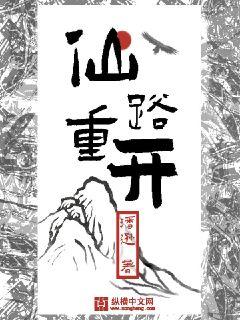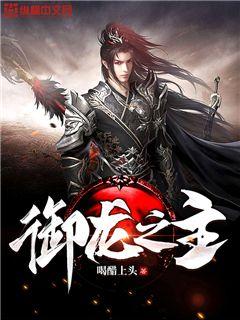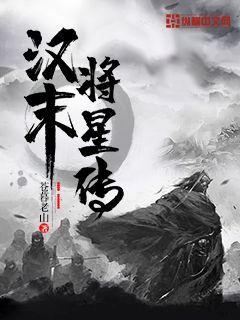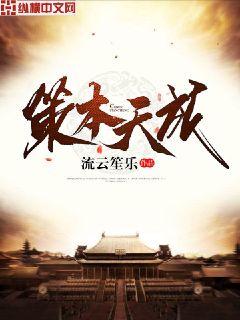
### 文章摘要
本文探讨了长传制导球员在现代足球中的重要性以及其战术革新与技艺融合的关系。长传制导球员不仅仅是战术的执行者,更是策略的制定者和比赛节奏的掌控者。通过深入分析,揭示了其在比赛中的多重角色,以及如何通过技术与战术的完美结合,影响和改变整体比赛局势。
###1、战术角色定位
长传制导球员在战术中的定位非常关键,他们不仅仅是场上的传球者,更是战术执行者。他们如何通过观察比赛局势,调整队友的位置和跑动,以及在战术体系中的具体作用,决定了比赛中的胜负。
战术革新带来了长传制导球员角色的新变化,现代足球的高速化和战术多样化要求他们具备更多的创新性和应变能力。
技艺的发展让长传制导球员能够通过精准的传球和瞬间判断,迅速改变比赛局势,对对手形成有效的压制。
###2、技术实战应用
长传制导球员的技术应用不仅限于传球的精准度,还包括对传球弧线、速度和方向的精确掌控。这些技术细节如何在比赛中发挥关键作用,将会在整体战术实施中展现。
现代技术的进步为长传制导球员提供了更多的选择,如何利用高科技设备提升自身技术水平,成为战术革新的推动者,是现代长传制导球员需要面对的挑战。
技艺的提升不仅仅局限于个人技术的发展,更包括团队协作和传球路径的优化。这些细节在比赛中可能决定胜负的关键因素。
###3、战术革新的影响
战术革新不仅仅是战术体系的更新,更是长传制导球员在比赛中发挥作用的新方式。他们如何通过新的战术组合和策略调整,影响整个球队的表现,是现代足球中不可忽视的一环。
战术的变化对长传制导球员的角色提出了新的挑战,如何在变幻莫测的比赛中保持冷静和高效率的表现,是他们需要思考和实践的重要问题。
战术革新的背后是长传制导球员对足球理解和战术执行能力的深度展示,他们的作用不仅仅是在传球环节,更是在整体战术实施中的关键推动者。
###4、技艺与战术的完美结合
技艺与战术的完美结合不仅仅是长传制导球员个人技术的展示,更是整个球队战术执行的保障。他们如何通过自身的技术优势,服务于战术的整体需求,是现代足球中关键的竞争力。
战术执行的高效性和技术细节的精准度是长传制导球员如何在比赛中赢得优势的重要因素。他们的作用不仅仅是在攻防转换中的快速决策,更是在比赛节奏和整体战术布局中的决定性影响。
通过技艺与战术的完美结合,现代长传制导球员展现出了越来越高的专业水平和比赛控制力,他们的存在使得球队在关键时刻能够稳定和快速地做出反应。
###总结:
长传制导球员在现代足球中扮演着不可或缺的角色,其战术革新与技艺的完美结合不仅提升了球队的整体实力,也推动了足球运动的发展。通过本文的分析,可以看出长传制导球员如何通过其独特的技术和战术智慧,在比赛中成为决定性的力量。
他们不仅仅是传球者,更是战术的制定者和执行者,他们的存在不仅丰富了比赛的内涵,更深化了足球战术的多样性和复杂性。
文章摘要的内容:法国球员Fekir以其卓越的技术和独特的进攻风格,影响深远地塑造了他的职业生涯和国际足坛形象。从他的早期职业起步到国家队表现,再到在欧洲俱乐部的成功,Fekir展现了他的实力和领导力。他在球场上的创造力和战术意识,不仅令人印象深刻,也深刻地改变了法国足球在国际舞台上的地位和影响力。
1、早期职业生涯
Fekir的初露锋芒
Fekir在法甲的崛起
进入法国国家队的第一步
2、在国家队的表现
Fekir在法国国家队的角色
国际赛场上的关键时刻
对法国足球影响的评价
3、欧洲俱乐部的成功
Fekir加盟Lyon的经历
在Lyon的成就与贡献
转会至Real Betis的转折与表现
4、对国际足坛的影响
Fekir的技术风格和战术意识
在足坛的人气和影响力
法国足球在全球的地位和影响
总结:
Fekir通过其独特的球风和对技术的精湛掌握,不仅在欧洲俱乐部获得成功,也在国家队展现了强大的领导力。他的职业生涯不仅是对法国足球的重要贡献,也在国际足坛上留下了深远的影响。
在球场上,他的创造力和战术意识让他成为球队的关键先生,同时也塑造了法国足球在国际舞台上的重要角色。
韩国足球球衣一直以来都在时尚界占有一席之地,其设计风向和流行潮流备受瞩目。本文将从韩国足球球衣的设计创新、品牌合作、技术材质以及球员穿着风格等四个方面展开探讨,深入剖析韩国足球球衣在时尚领域的独特魅力。通过本文的阐述,读者将更加全面地了解韩国足球球衣在流行潮流和设计风向上的独特之处。
1、设计创新
韩国足球球衣在设计创新方面一直走在时尚的前沿。从经典款式到新潮设计,韩国足球球衣不断追求独特性和个性化,为球迷带来全新的时尚体验。设计师们常常融入韩国传统元素和现代流行趋势,打造出引人注目的球衣设计,为球队增添魅力。
除了外观设计,韩国足球球衣还注重细节的打磨。从面料选择到工艺制作,每一个环节都经过精心考量,确保球衣的质感和舒适度达到最佳状态。这种对细节的关注使韩国足球球衣在设计上更具竞争力。
在设计创新方面,韩国足球球衣不断推陈出新,探索各种可能性,引领潮流,成为时尚界的新宠。
2、品牌合作
韩国足球球衣的设计风向和流行潮流也受到品牌合作的影响。多个知名品牌与韩国足球俱乐部合作推出联名系列,将时尚元素融入到球衣设计中,给球迷带来更多选择和惊喜。
品牌合作不仅为韩国足球球衣注入了新的创意和灵感,也提升了球衣的品质和档次。通过与不同品牌的合作,韩国足球球衣在时尚界树立了独特的地位,成为众多球迷追逐的对象。
品牌合作不仅促进了韩国足球球衣的设计创新,也为品牌在时尚市场上拓展了更大的空间,实现了双赢局面。
3、技术材质
除了设计和品牌合作,韩国足球球衣的技术材质也是其独特之处。采用先进的面料和制作工艺,韩国足球球衣在吸湿排汗、透气舒适等方面具有突出的性能优势。
技术材质的不断更新换代,使韩国足球球衣在功能性和实用性上更具优势。无论是在比赛中的舒适度还是在日常穿着中的适应性,韩国足球球衣都能满足不同需求。
技术材质的不断提升,使韩国足球球衣成为球员和球迷们的首选,展现出时尚与实用并重的特点。
4、球员穿着风格
最后一个方面是球员穿着风格。韩国足球球衣的设计也时刻关注着球员的穿着感受和运动需求。球员们在比赛中穿着韩��足球球衣展现出专业、时尚的形象,为球队赢得更多关注。
球员们的穿着风格也对球衣设计产生影响,品牌会根据球员的需求和喜好进行定制设计,使球员穿着更加个性化,也更符合比赛场合的要求。
通过球员穿着风格的展示,韩国足球球衣在时尚界树立了自己的风格和标志,成为许多球迷和潮人们追捧的对象。
总结:
综上所述,韩国足球球衣在流行潮流和设计风向上展现出独特的魅力。通过设计创新、品牌合作、技术材质和球员穿着风格等方面的探讨,我们不难发现韩国足球球衣在时尚领域的地位和影响力。韩国足球球衣不仅体现了时尚的潮流风向,也展示了设计的创意和品质的提升,成为球迷和潮人们追逐的时尚宠儿。
文章摘要:2018年,曼联阵容以其核心球员为支柱,展现了混合了经验与活力的风采。从默尼尔的指挥到卢卡库的进球,再到马夏尔的突破,每位球员在球队的成功中都有着独特的贡献。这篇文章将深入探讨这些球员在战术、领导力、进攻和防守方面的角色与贡献,揭示了他们如何共同创造了曼联在2018年的辉煌。
1、战术调配与领导力
在2018年,曼联依赖默尼尔的指挥和瓦伦西亚的领导力来确保防守稳固。默尼尔在后防线上的组织能力使得曼联在关键时刻能够守住阵地,他的传球和位置感也为球队的进攻提供了坚实的后盾。瓦伦西亚则在右边路的不懈努力和跑动为球队提供了持续的支持,他的防守稳定性和进攻威胁成为曼联战术体系中不可或缺的一环。
除了默尼尔和瓦伦西亚,杰拉德·皮克斯和劳德鲁普也在中场扮演了关键的角色。皮克斯的控球能力和战术视野使他成为球队中场的核心,他不仅能够发起进攻还能有效地回防,是球队中场串联的重要纽带。劳德鲁普则通过其防守拼抢和对抗能力为球队争取了大量的控球权,他在中场的坚韧表现为曼联提供了强大的防守支持。
默尼尔和瓦伦西亚的领导力不仅体现在场上,他们在更衣室中的影响力也是曼联成功的关键因素之一。他们的职业精神和赛场经验为年轻球员树立了榜样,帮助整个团队保持了稳定和团结。
2、攻击端的主导者
卢卡库在2018年成为了曼联的进攻火力点,他凭借强大的体能和得分能力成为球队锋线上的核心。卢卡库不仅能够单刀直入并完成进球,他在场上的跑动和制造空间的能力也为队友创造了许多得分机会。
马夏尔的快速突破和个人能力使他成为曼联进攻中不可或缺的一部分。他的技术娴熟和突破能力为球队带来了许多关键进球,尤其是在比赛关键时刻展现出色的表现。
桑切斯的加盟为曼联的进攻增添了新的变化。他的技术造诣和创造力使他成为球队进攻中的重要组成部分,他的传球和射门能力为曼联带来了更多的得分机会。
3、防守稳固与团队合作
曼联在2018年不仅在进攻端表现出色,在防守方面也有着显著的进步。琼斯和斯莫林的组合为曼联提供了强大的防守支持,他们的合作和配合使得曼联的防线更加稳固。
戴利·布林德的加盟进一步增强了曼联的防守深度,他在中后卫位置上的出色表现使得球队在防守端有了更多的选择。他的空中优势和防守意识为曼联在面对高空球和对手进攻时提供了重要的支持。
德赫亚作为曼联的门将,他在2018年的表现再次证明了自己是世界级守门员的代表。他的扑救和反应能力为曼联保护了无数次的球门,并在关键比赛中拯救了球队。
4、球队表现与成就
2018年,曼联在英超联赛中取得了不俗的成绩,虽然最终未能夺得冠军,但球队的表现仍然令人印象深刻。他们在赛季中期展现了出色的连胜表现,并在各项赛事中都有着斗志和竞争力。
尽管面临了一些伤病和挑战,但曼联的核心球员们在2018年展现了强大的团队合作精神和战斗力。他们在球场上的表现不仅赢得了球迷的尊敬和喝彩,也为曼联的未来奠定了坚实的基础。
总结:
2018年的曼联阵容以其核心球员的出色表现和卓越贡献,展示了一支具备强大进攻和稳固防守的顶级球队形象。无论是默尼尔在防守端的领导,还是卢卡库和马夏尔在进攻端的威胁,以及球队整体的团结与合作,都成为了球队成功的关键因素。尽管未能摘得重要冠军,但2018年的曼联无疑为球迷们留下了许多难忘的时刻,同时也为未来的荣耀奠定了坚实基础。
文章摘要的内容:本文探讨NBA球员个人品牌塑造的成功背后的秘密与策略。通过分析四个关键方面:品牌定位与价值观、社交媒体与数字营销、赞助合作与商业合作、危机管理与形象修复,揭示了这些策略如何帮助球员在竞争激烈的市场中脱颖而出,建立持久的品牌影响力。
1、品牌定位与价值观
个人品牌的成功建立首先依赖于清晰的品牌定位和价值观。球员需要确定自己的核心形象和所要传达的价值观念。例如,勒布朗·詹姆斯通过强调家庭、社区责任和领导力,构建了“更多比篮球”(More Than An Athlete)的品牌形象。
在建立品牌时,一致性和真实性至关重要。通过在比赛外的行为和社交媒体上的表现来强化品牌价值观,球员可以赢得球迷和赞助商的信任和支持。
此外,品牌的差异化也是成功的关键之一。球员需找到自己独特的品牌声音和故事,以在竞争激烈的市场中脱颖而出。
2、社交媒体与数字营销
在数字时代,社交媒体成为塑造个人品牌的强大工具。球员通过定期更新和内容创造来积极参与社交媒体,增加粉丝互动和品牌曝光。例如,斯蒂芬·库里通过他的Instagram和Twitter账号展示了他的家庭生活、比赛幕后和个人品牌活动。
数字营销不仅仅是在社交媒体上发布内容,还包括与品牌一致的网站设计、电子邮件营销和在线广告。通过这些渠道,球员可以直接与粉丝和潜在赞助商互动,进一步加强品牌影响力。
成功的数字营销策略需要持续的投入和创新,以适应快速发展的技术和平台变化。
3、赞助合作与商业合作
赞助合作是NBA球员品牌建设中的重要一环。球员通过与大品牌合作,将其个人形象与商业价值联系在一起。例如,迈克尔·乔丹与耐克的合作,不仅提升了他的品牌价值,也推动了乔丹鞋的全球热销。
除了赞助合作,商业合作也是重要的收入来源和品牌推广途径。球员可以通过合作推出个人品牌的产品线,或参与慈善活动来增强公众形象。
在赞助和商业合作中,保持品牌的一致性和高质量是确保长期成功的关键因素。
4、危机管理与形象修复
尽管球员们尽力维护自己的品牌形象,但危机和负面事件时有发生。有效的危机管理和形象修复策略至关重要。球员需要快速、诚实地回应问题,并采取适当的措施来缓解负面影响。
在危机发生时,透明度和道歉是恢复公众信任的关键步骤。球员可以通过与媒体和社交媒体的互动,积极承担责任并展示改进措施,来有效地管理危机。
此外,建立稳固的支持系统和团队,以应对潜在的品牌危机,也是个人品牌管理的重要策略。
总结:
个人品牌的成功建立离不开明确的品牌定位和价值观,以及积极参与社交媒体和数字营销的策略。赞助合作和商业合作不仅可以增强品牌的商业价值,还能推广品牌形象。有效的危机管理和形象修复策略则是保持品牌长期稳定发展的关键。
通过这些策略的综合运用,NBA球员们能够在竞争激烈的市场中塑造和维护自己的个人品牌,赢得更广泛的认可和支持。
Certainly! Here's the structured article on "Optimizing Training Performance through Nutrition and Diet for Professional Athletes":
**Abstract:**
Professional athletes rely heavily on nutrition and diet to enhance their training performance. This article explores key factors that optimize their performance through dietary strategies. It examines the role of macronutrients, micronutrients, hydration, and timing of meals in maximizing athletic potential. By understanding and implementing these factors, athletes can achieve peak performance and maintain optimal health.
---
**1、Macronutrients:**
Macronutrients play a fundamental role in the diet of professional athletes, influencing energy levels, muscle recovery, and overall performance.
Athletes typically require a balanced intake of carbohydrates, proteins, and fats to meet their energy demands and support muscle repair.
Carbohydrates serve as a primary fuel source, especially during high-intensity activities, emphasizing the importance of adequate intake and timing to sustain performance.
1、Proteins:
Proteins are essential for muscle repair and growth, with athletes needing slightly higher amounts to recover effectively from training sessions.
Timing protein consumption around workouts is crucial for maximizing muscle synthesis and adaptation to exercise-induced stress.
A variety of protein sources, including lean meats, dairy, and plant-based options, offer athletes flexibility in meeting their nutritional needs.
2、Fats:
Healthy fats contribute to sustained energy levels and support overall health in athletes, emphasizing sources like nuts, seeds, and fatty fish.
A balanced intake of omega-3 and omega-6 fatty acids aids in reducing inflammation and optimizing recovery post-training.
Adjusting fat intake based on training intensity and individual metabolic needs helps athletes maintain optimal body composition and performance.
3、Carbohydrates:
Carbohydrates are critical for replenishing glycogen stores and providing quick energy during intense exercise sessions.
Choosing complex carbohydrates such as whole grains and vegetables ensures sustained energy release and supports prolonged athletic performance.
Strategic carb-loading before competitions or high-demand periods helps athletes maximize glycogen storage and enhance endurance.
---
**2、Micronutrients:**
Beyond macronutrients, micronutrients are essential for maintaining overall health, supporting immune function, and optimizing athletic performance.
Athletes require adequate intake of vitamins and minerals to support physiological processes, including bone health, oxygen transport, and muscle contraction.
Key micronutrients such as iron, calcium, vitamin D, and antioxidants play crucial roles in reducing the risk of injury and illness among athletes.
1、Iron and Calcium:
Iron is vital for oxygen transport and energy production, particularly significant for endurance athletes to prevent fatigue and optimize performance.
Calcium supports bone health and muscle function, essential for maintaining skeletal integrity and reducing the risk of stress fractures.
Ensuring sufficient intake of these minerals through diet and, if necessary, supplementation helps athletes meet their unique nutritional demands.
2、Vitamins and Antioxidants:
Vitamins such as vitamin D, C, and E contribute to immune function and recovery, aiding in the repair of muscle tissue and reducing oxidative stress.
Antioxidants from fruits, vegetables, and nuts help mitigate exercise-induced inflammation and support cellular repair processes post-exercise.
Strategies to incorporate a diverse range of micronutrient-rich foods into an athlete’s diet promote overall health and optimize training adaptations.
3、Hydration:
Hydration is critical for maintaining performance and preventing dehydration-related complications during training and competition.
Athletes should monitor fluid intake to replace losses through sweat, adjusting consumption based on environmental conditions and individual sweat rates.
Optimal hydration supports thermoregulation, nutrient transport, and cognitive function, enhancing overall athletic performance and recovery.
---
**3、Timing of Meals:**
The timing of meals and nutrient intake around training sessions is crucial for optimizing energy availability, promoting recovery, and supporting adaptation to exercise stress.
Strategic meal timing helps athletes maximize glycogen storage, enhance muscle protein synthesis, and minimize muscle breakdown.
Pre-exercise nutrition focuses on providing adequate carbohydrates for fuel and minimizing gastrointestinal distress during workouts.
1、Pre-Exercise Nutrition:
Consuming a balanced meal or snack containing carbohydrates and a moderate amount of protein 2-4 hours before exercise provides sustained energy and supports muscle function.
Hydration before exercise ensures adequate fluid balance and enhances thermoregulation during physical exertion, optimizing performance and reducing the risk of dehydration.
2、Post-Exercise Recovery:
Immediately following exercise, consuming a combination of carbohydrates and proteins within the first 30 minutes to 2 hours supports glycogen replenishment and muscle repair.
Timing protein intake post-exercise stimulates muscle protein synthesis, facilitating recovery and adaptation to training-induced stress.
Incorporating micronutrients and fluids into post-exercise meals aids in rehydration, replenishment of electrolytes, and overall recovery.
3、Nutrient Timing Strategies:
Strategically timing meals and snacks throughout the day maintains stable blood sugar levels and sustains energy for consistent training performance.
Adjusting nutrient intake based on training volume and intensity helps athletes meet their energy demands and achieve optimal nutrient timing for enhanced performance.
Individualized nutrition plans tailored to training schedules and performance goals optimize nutrient timing strategies, supporting long-term athletic success.
---
**4、Conclusion:**
Optimizing training performance through nutrition and diet involves a comprehensive approach focusing on macronutrients, micronutrients, hydration, and meal timing.
By understanding the role of each component and implementing evidence-based strategies, athletes can enhance performance, support recovery, and maintain overall health.
Continued research and personalized nutrition plans are essential to meet the unique needs of professional athletes and maximize their athletic potential.
Overall, integrating these key factors into a structured nutrition plan empowers athletes to achieve peak performance and excel in their respective sports.
文章摘要的内容:
日韩球员在《Football Manager》游戏中展现出了多方面的新趋势与战术演变。本文从球员培养与技术发展、战术风格的变化、数据分析的应用以及游戏体验的影响四个方面展开阐述。首先,探讨了日韩球员在游戏中如何通过技术和战术发挥其独特的特点;其次,分析了他们在不同战术风格下的角色演变与战术变革;然后,揭示了数据分析在游戏中对日韩球员的发掘与利用;最后,探讨了这些趋势如何深刻地影响了玩家的游戏体验与策略选择。
1、球员培养与技术发展
随着游戏版本的更新,日韩球员在FM中的培养方式逐渐变得多样化。最初的偏向技术型球员的趋势,如技术和速度的强调,逐渐向全面型球员转变。例如,新一代的日韩球员更加注重体能和战术智慧的培养,这一变化如何反映在游戏中的实际表现,成为玩家关注的焦点。
同时,技术发展对日韩球员的游戏表现产生了深远的影响。随着3D引擎的不断进步,球员动作的真实性和细节感在游戏中得到了更好的展现,这也让日韩球员的特色更加突出。
进一步探讨日韩球员在FM中的技术属性如何影响其角色定位和战术运用,以及这种技术发展如何与战术策略相互作用。
2、战术风格的变化
日韩球员在FM游戏中的战术风格日益多样化,从传统的技术打法到更加注重身体对抗和速度的战术方式。这种变化不仅反映了游戏本身战术设定的进步,也与现实足球战术的发展密切相关。
探讨在不同战术体系下,日韩球员的角色如何调整和变化,以及他们在FM游戏中如何适应和发挥自己的特长。
进一步分析战术变革对日韩球员技术属性需求的影响,以及这种变化如何影响玩家在游戏中的策略选择。
3、数据分析的应用
数据分析在FM游戏中的应用日益普及,尤其是对日韩球员的数据分析和评估。通过大数据技术,玩家可以更加精确地评估和挖掘日韩球员的潜力和优势。
分析不同数据指标对日韩球员潜力评估的影响,以及这些数据如何帮助玩家进行更有效的球员选择和培养策略。
探讨数据分析在FM游戏中对日韩球员市场价值和转会策略的影响,以及玩家如何通过数据分析优化其团队建设。
4、游戏体验的影响
日韩球员在FM游戏中的新趋势和战术演变不仅影响了游戏本身的体验,也深刻地影响了玩家的策略选择和团队管理方式。
分析这些趋势如何引导玩家重新审视战术布局和球员选择,以及如何提升整体游戏体验。
最后,总结这些趋势对FM玩家在游戏中的实际操作和决策带来的全面影响。
总结:
日韩球员在FM游戏中的新趋势与战术演变,不仅呈现出技术与战术上的多样化发展,还通过数据分析和游戏体验的提升,深刻地影响了玩家的战略选择与团队管理。这些变化不仅丰富了游戏的可玩性,也反映了现实足球战术与技术的紧密关系。
在未来的游戏版本中,预计这些趋势将继续发展,并与全球范围内的足球现象互相交织,为FM玩家带来更加丰富和真实的游戏体验。
Certainly! Here's the structured article on "A Study of the Achilles Tendon in Athletes: An Exploration of Anatomy, Function, and Sports Injuries".
**Abstract:**
The Achilles tendon, pivotal in athletic performance, undergoes intense scrutiny due to its critical role in movement and its susceptibility to injury. This article explores its anatomy, biomechanics, the impact of sports activities on its health, and potential strategies for injury prevention and treatment.
1、Anatomy of the Achilles Tendon
The Achilles tendon, the largest and strongest tendon in the human body, connects the calf muscles to the heel bone. Its structure comprises primarily collagen fibers, organized to withstand immense tensile forces.
This segment will delve into the microscopic anatomy, detailing its composition and arrangement of fibers that facilitate its role in transmitting forces during movement.
The blood supply and nerve innervation of the Achilles tendon will also be discussed, highlighting their importance in its function and susceptibility to injury.
2、Biomechanical Function of the Achilles Tendon
The Achilles tendon plays a crucial role in various movements, including walking, running, and jumping. Its biomechanical properties enable efficient energy storage and release, contributing significantly to athletic performance.
This section will explore how the tendon functions as a spring-like mechanism, storing elastic energy during dorsiflexion and releasing it during push-off phases of gait.
The influence of tendon length and stiffness on performance will also be examined, emphasizing its dynamic role in optimizing movement efficiency.
3、Sports-Related Injuries of the Achilles Tendon
Athletes frequently experience Achilles tendon injuries, ranging from acute ruptures to chronic overuse conditions. Understanding the mechanisms and risk factors associated with these injuries is crucial for prevention and treatment.
This part will discuss common sports-related injuries such as Achilles tendinopathy and tendon ruptures, exploring factors like training errors, biomechanical imbalances, and anatomical variations that predispose athletes to these conditions.
Diagnostic approaches and rehabilitation strategies tailored to different types of Achilles tendon injuries will also be addressed.
4、Conclusion: Implications for Research and Practice
The study of the Achilles tendon continues to evolve, driven by advancements in anatomy, biomechanics, and clinical research. Insights gained from this exploration have significant implications for both athletic performance enhancement and injury prevention.
This final section summarizes key findings, emphasizing the importance of a multidisciplinary approach to address the complexities of Achilles tendon health in athletes.
Overall, the Achilles tendon remains a focal point of research due to its pivotal role in athletic performance and susceptibility to injury. By comprehensively understanding its anatomy, biomechanics, and response to sports-related stress, researchers and practitioners can better support athletes in achieving optimal performance while mitigating the risk of tendon injuries.
As research progresses, integrating findings into training programs and injury management protocols will continue to enhance athletic outcomes and overall tendon health.















